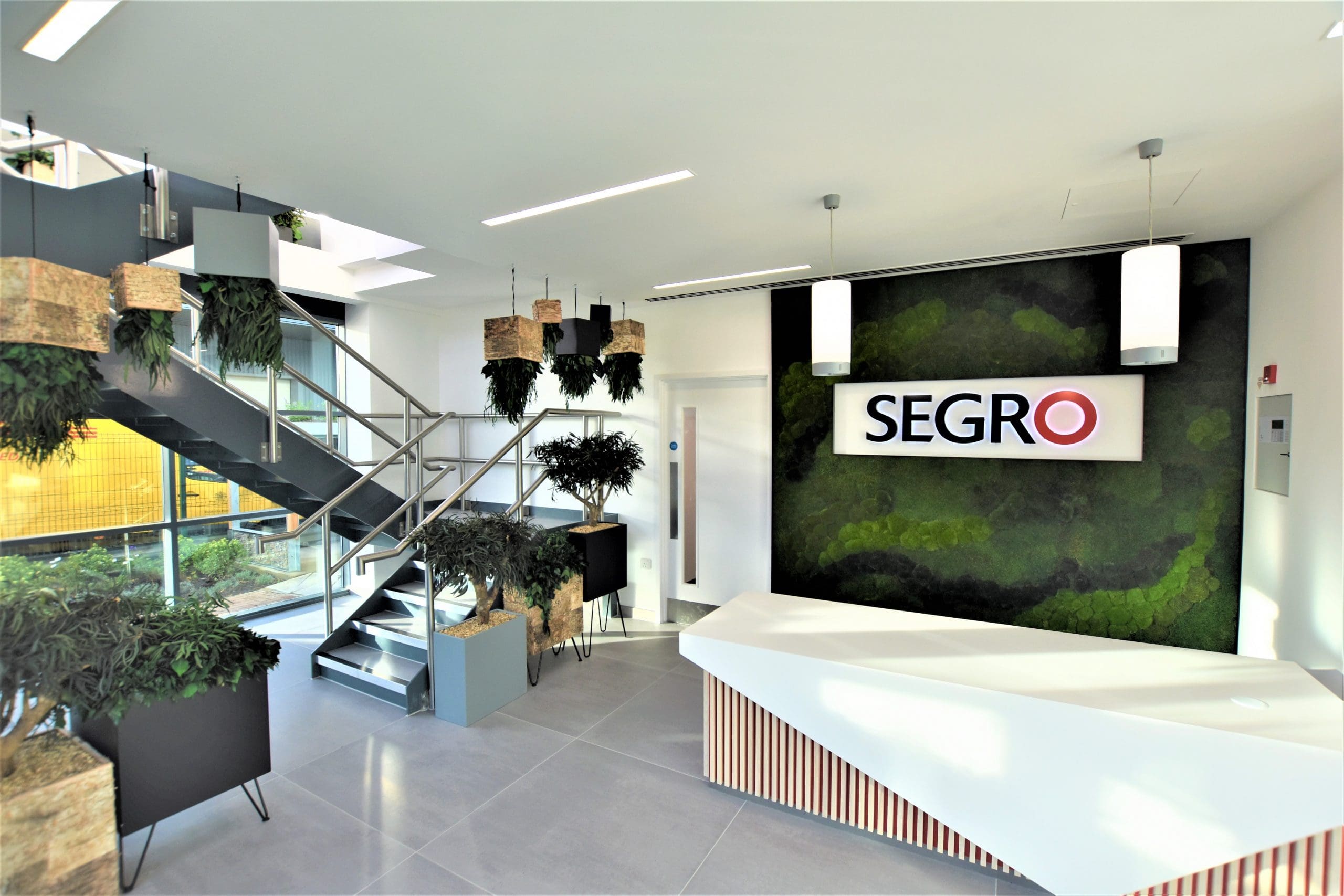The rise in e-commerce is having a significant impact on warehouse demand. According to Savills, 2.8 billion packages were delivered in the UK last year, an annual growth of 9.1% over the past four years. We expect demand to remain high in the medium-term.
Take up of logistics space has also reached a record high of 8.26m square feet in the South East, with demand outstripping supply. However, the number of new logistics units under construction is on the rise across the region, with hubs along the M1 and Oxford to Cambridge corridor being created.
The pandemic has also accelerated the implementation of sustainability measures and strategies, with many investors, funds, and larger developers adopting ESG (environmental, social and governance) policies and more occupiers pushing the sustainability and green agenda.
Most new-build logistics and warehouses have a very high energy-saving performance and strong environmental credentials. For older buildings, retrofitting with new materials and products is required to achieve the same effect, and this requires more time and budget, but this is needed if we are to reach the Government’s carbon targets by 2050.
Our team has been busy helping a range of clients to meet their ESG requirements. We are currently working on the refurbishment of an 89,000 square foot industrial unit within the Bletchley area, which will achieve a BREEAM Excellent rating and net zero carbon on completion later this year.
We also recently completed the refurbishment of a 43,036 square foot warehouse space in London for SEGRO, achieving net zero carbon and an Excellent BREEAM rating, as well as adding value to the property. We completely remodelled the layout of the unit and extended the square footage by adding a first floor to the ancillary accommodation.

Key measures that were implemented to achieve net zero carbon and the BREEAM certification, included:
- EV charging points for the occupier and the general public to encourage a switch to electric vehicles
- The creation of a woodland walk and nature boxes to attract wildlife and solar powered picnic benches for employees to work and relax outside
- Secure bicycle parking, to encourage employees to cycle to work, complete with rich biodiverse growing roofs and wildlife habitat panels. Low maintenance, drought-tolerant planting is nectar-rich for butterflies, bees, moths and other invertebrate wildlife
- Photovoltaic panels installed to the roof provide electricity to the premises and any excess back into the network grid, saving approximately £24,000 per annum. Comprehensive data about the energy produced is fed into an app and the data is live streamed in the reception area
- CO2 sensors were implemented to the office MHVR units increasing and decreasing the fresh air supply based on the level of CO2 within the office space. When the office is unoccupied, the unit does not run at full speed
- Heat recovery up to 85% for additional energy and cost savings
- Water reducing products, such as non-concussive taps and rainwater harvesting feeds were fitted to the WCs, anticipated to save over 400,000 litres of water per annum
- Reclaimed and reused building materials installed including bio-based carpet tiles – 395 square metres of carbon neutral flooring were installed, resulting in the retirement of four metric tons of carbon dioxide – the equivalent of the emissions from a car travelling 15,974 kilometres
- Installation of a recycled raised access floor to the additional office space to the first floor. Reusing the existing raised access floor to the ground floor
- Airlite decoration was used on all wall surfaces
- New energy efficient LED light fittings producing 161 luminaire lumens per circuit Watt
It is great to be part of such landmark projects and to deliver SEGRO’s most sustainable industrial refurbishments. We are very pleased with the results of the refurbishment work, helping SEGRO to achieve their aim of being net zero carbon. This is hopefully just the start of many more projects like this.
The property industry has woken up to the need to act quicker to decarbonise new and existing property stock, to reduce waste, and to ensure schemes are as sustainable as possible to reverse the negative impacts of climate change. More needs to be done, but refurbishment projects with these aims are a great step to achieving this across the UK and world.
For more information visit www.hollisglobal.com














